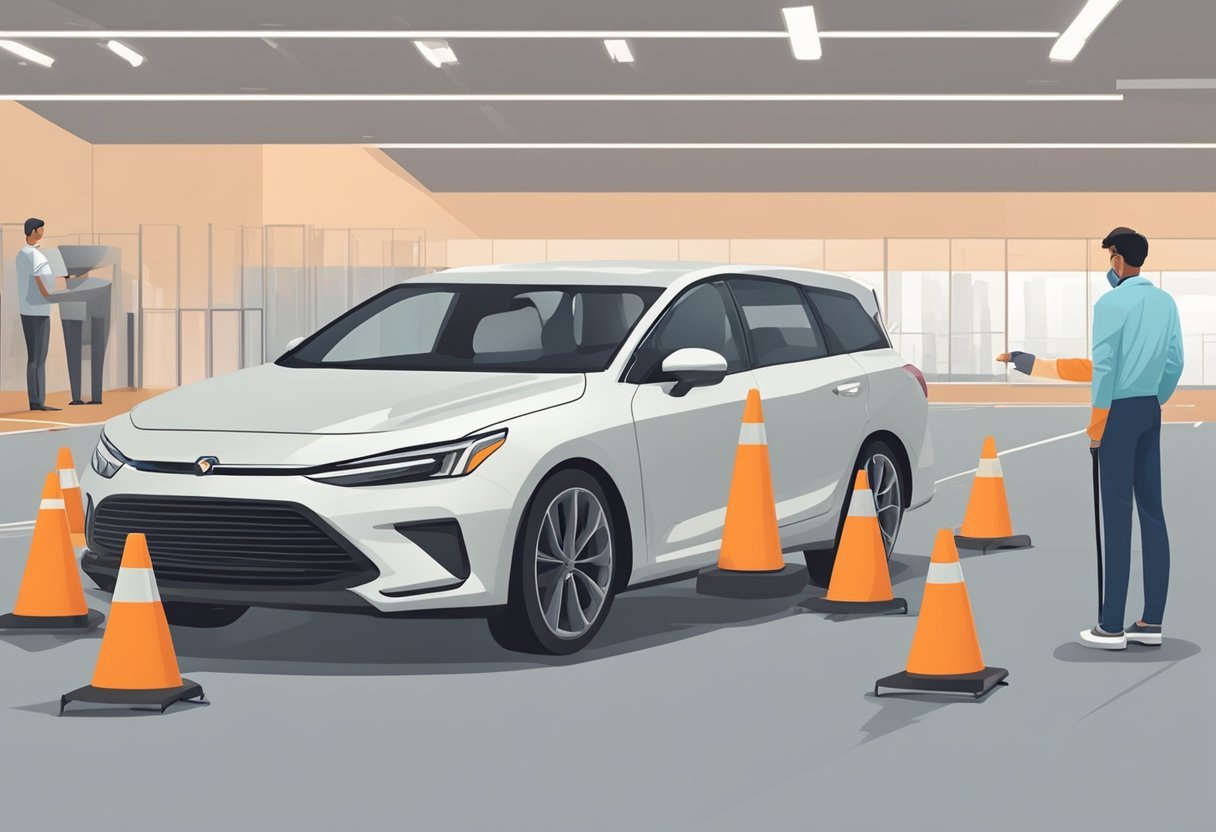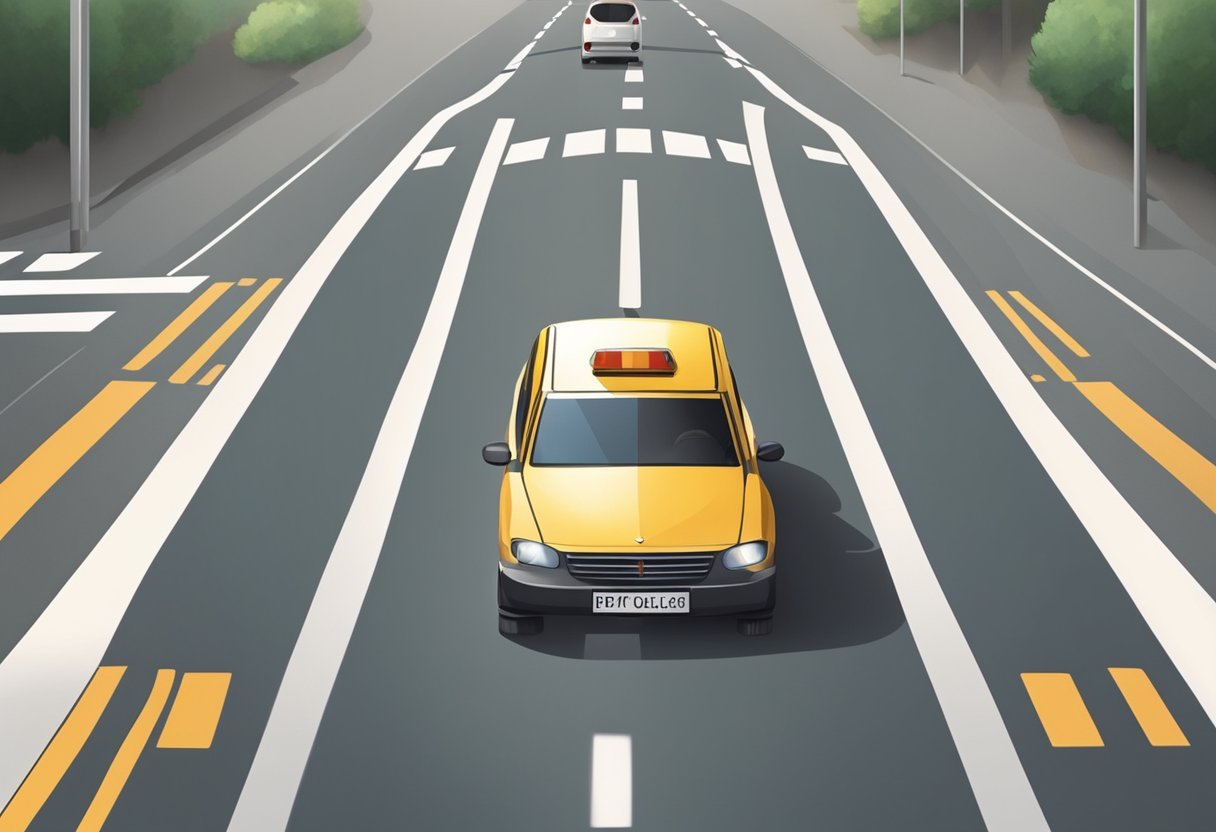RTA 驾驶考试练习 – 考试取得好成绩的基本技巧
The journey to obtaining a driver’s licence in various jurisdictions often begins with a theory or knowledge test. This critical component must be passed before progressing to the practical driving assessment.
In places like 迪拜, this is commonly referred to as the RTA theory test, where the Roads and Transport Authority provides the framework for aspiring drivers to understand road signs, traffic laws, and safe driving practices. Access to practice tests and the official handbook is invaluable to preparing, offering a glimpse into the type of questions encountered during the exam.

Elsewhere, such as in New South Wales, Australia, the Driver Knowledge Test is the initial step towards getting a learner driver. Lidriver’s Prospects are advised to undertake various practice materials available online, through mobile apps, or offered by local transport services. These resources simulate the testing conditions, equipping one with the necessary insight to take the test confidently.
Similarly, in New York State, an array of study guides and practice quizzes corresponding to the official driver’s manual are accessible to help individuals prepare for their written DMV test, aiming to blend preparation with convenience.
RTA Driving Test Practice – Key Takeaways
- Understanding road rules and signs is crucial for passing the theory test.
- Accessing practice tests helps prepare effectively for the knowledge test.
- Passing the initial tests is necessary before taking the practical driving assessment.
Understanding the RTA Driving Test

The Roads and Transport Authority (RTA) driving test is critical in obtaining your 驾驶执照 in Dubai. It’s designed to assess your knowledge and comprehension 的 道路交通安全 和 road rules, ensuring you’re equipped to drive responsibly.
测试结构
Your journey to passing the test includes:
- 理论测试: A computer-based exam that checks your understanding of traffic signs, signals, and rules.
- Practical Test: An on-road assessment where an examiner evaluates your driving skills.
准备技巧
- Enrol in Driving Courses: Choose a reputable driving school in Dubai to learn both theoretical and practical aspects of driving.
- RTA Theory Practice Test: The official RTA practice tests offer over 500 questions and answers to solidify your knowledge base.
- Driving Test App: Download the RTA 驾驶考试 app from Google Play for access to mock tests.
- Incremental Practice: Start with more accessible tests before progressing to more challenging scenarios.
By immersing yourself in continuous practice and having a firm grasp of the local driving environment, you heighten your chances of passing the RTA driving test. Remember, Dubai prioritises road safety and demands high standards from its drivers; hence, your meticulous preparation is not only for passing the test but for becoming a competent driver for life.
Preparing for the Driver Knowledge Test
Before you take your Driver Knowledge Test (DKT), the key components you need to focus on are the resources you’ll utilise for study and the approach you’ll take on exam day. Adequate preparation and a calm, confident mindset are your greatest allies.
Study Resources and Practice Tests
Practice Tests: You can enhance your understanding of driving rules and regulations by taking online practice tests. The questions in these tests often mirror those found in the real DKT, providing you with a realistic practice experience. Utilising the free practice tests available from the Roads and Transport Authority (RTA) is a smart way to gauge your readiness.
Driver’s Handbooks: Don’t overlook your local RTA driver’s handbook, which contains the necessary foundational knowledge. It’s the source from which the DKT questions are derived and, hence, your primary study material.
Mobile Apps: Make the most of technology by downloading driver test practice apps on your iPhone or Android device. These apps usually allow you to practice on the go and get instant feedback on correct answers.
Tips for Success on the Exam Day
Arrive Prepared: Ensure you’ve studied the various resources available to you. Confidence in your preparation will help keep nerves at bay.
Understand the Structure: Familiarise yourself with the format of the DKT. Knowing the structure can help reduce surprises and increase your efficiency in answering questions.
Language Options: If English isn’t your first language, check if the DKT is available in your preferred language. This can help you to comprehend questions better and select the correct answer.
Be Mindful of Time: While reading each question carefully is essential, also be conscious of the time you’re allotted. Practice tests can help you understand the pace you need to maintain.
The Practical Driving Assessment
Before you take the practical driving test, it’s crucial to understand the vehicle requirements and the exam components that will determine your success. Your driving ability and knowledge gained from your driving school training will be tested, ensuring you are equipped to drive safely.
Vehicle Requirements
Your vehicle must meet specific criteria to be deemed suitable for the practical driving test. Here’s what you need to check:
- 文档: Valid vehicle registration and insurance.
- 安全: The vehicle must be roadworthy, with all essential functions like brakes, headlights, and indicators in working order.
- Cleanliness: The interior should be clean and tidy so as not to cause any distractions or hazards during the test.
- L-Plates: Displayed to indicate a driver under assessment.
It’s advisable to use the exact vehicle you have been practising with at your driving school to be comfortable during the exam.
Test Components and Scoring
The test is broken down into several key components, each focusing on different aspects of driving. Below are the critical elements you’ll need to prepare for:
- Manoeuvres: Including parallel parking, reversing and turning.
- Obedience to Traffic Laws: Following speed limits and traffic signals.
- Observation and Awareness: Showcasing your ability to observe your surroundings safely.
- Control of Vehicle: Smooth acceleration, braking, clutch control, and overall vehicle handling.
- Positioning: Stay in the correct lane and position yourself safely during all manoeuvres.
Your performance in these areas will be scored, and you must meet the minimum threshold to pass. Errors are categorised into severe and minor faults, and accumulating too many of either, or committing any dangerous faults, will fail.
Consistent practice with a driving instructor and a thorough understanding of the driver knowledge test are your best strategies to prepare for the practical driving assessment. Whether driving a car or a motorcycle, adhering to these guidelines is essential for passing your practical driving test.
After the Driving Test
Once you have passed your driving test, you enter a new phase where securing your driver’s licence and adhering to road safety regulations become your priority.
Obtaining Your Licence
If you’ve completed your driving test in New South Wales, you will proceed to obtain your full driver’s licence. Initially, you hold a learner licence, which allows you to practice driving under supervision.
Upon passing your driving test, visit a Service Centre to apply for your provisional or full licence, depending on your age and driving experience. The Driver Licensing Access Program might be available to help if you face barriers in getting your licence.
Road Rules and Safety Regulations
As a new licence holder, you must stay well-informed of the latest road rules and safety regulations. Adherence to these rules is not only a legal obligation but also essential for your safety and that of other road users.
Regularly review the road rules that apply in New South Wales and ensure you are familiar with local traffic laws to maintain your driving privileges and contribute to a safer driving environment.






